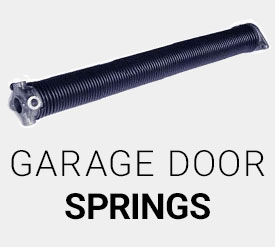Door hinges are central to the operation and structure of any door, including the garage door. However, garage doors are likely to suffer from wear and tear over time because of the motion of moving garage doors up and down. But how do you know when it is time to replace the hinges?
It is probably time to replace the door hinges if the door is making strange noises. Additionally, you may need to replace the hinges if they are broken or they have loose or missing screws. Below, we tell you everything you need to know about garage door hinges replacement. Read on.
Are All Garage Door Hinges The Same?
No, not all garage door hinges are the same. You need to know which hinges you will be changing before going to buy replacements.
The first thing you will need to understand is that these hinges will need to fit between your door’s framework and the hinge.
To ensure you have the right hinges, you need to look at the numbers engraved on the hinges. Normally, the hinges at the door’s center are stamped with a #1 while those between the second and third panels are stamped with #2 and so on. Before going to buy hinge replacements, it would be a good idea to see which hinges are right for the garage door.
How To Replace Garage Door Hinges?
The process of replacing a broken garage door hinge starts with you understanding whether you need a door hinge replacement in the first place. As we have highlighted, you will need to replace your door hinges if the door is making strange noises, the hinges have missing screws or they are broken. After ascertaining that your garage door needs a replacement, you will need to check the hinge numbers as we have explained above. Below we discuss the rest of the process.
Unplug the Garage Door Opener
This step is crucial as it will ensure that nobody runs the door as you are working on it. It is crucial that you do this even when checking the garage door hinges you need. You will need to check the door hinges on the overhead door. Commonly, wide-body 14 gauge hinges are compatible with residential garages. Wide-body 11 gauge hinges are more common in use with large commercial doors.
Apart from the numbering system and the hinge gauge, you will need to look at the hinge type. There are narrow and wide-body hinges, half hinges, and truck door hinge types. Wide doors may use long stem rollers when they have double-end stiles.
Remove the Old Garage Door
After unplugging the garage door open, you will need to remove the damaged door hinge. This is done with the door in a closed position and only a single door hinge can be removed at a time. You will need to remove two to four self-tapping 7/16 inch tek screws. Many popular brand names will use the 7/16” fastener. You can use a cordless impact driver or wrench to remove self-drilling screws. However, the wrench is likely to take you more time compared to the impact driver. If you are using an impact driver, it is recommended that you get a matching 7/16’ magnetic bit as this will keep your fasteners from dropping on the floor after you remove them from the garage door.
Install the New Door Hinge
For this step, you will need to put the rollers into hinge carriers. Next, you will insert the roller into the track. For this to happen, you will need to ensure that the size, gauge, and style of the existing hinge match the existing one.
If your garage door has narrow stiles at the end and middle, you will require narrow-bodied hinges. However, many doors can support 14 gauge wide-body hinges. Remember, you may need new self-drilling tek screws if the fasteners on your old ones are already worn out.
Your new hinges will need at least two fasteners on the roller carrier’s top and bottom. You will also need three screws to go below and above the roller carrier. Be careful not to tighten the self-tapping screws as they will remove the metal on the door stiles and make the screws loose. It is best to use self-tapping screws on the precut hinge holes and garage door. However, you can use them anywhere on the door stiles and hinges as necessary.
Test the Door Hinge Operation
After installing the new door hinge, it is crucial to test it to ensure it is holding tightly to the door and is aligned. Additionally, you will need to ensure you have the right number hinge at the right position on the door and that the hinges are not fixed upside down.
If your screws are loose, you need to use thicker screws or you will need to start new holes. If everything is okay, the next would be to lubricate the hinge roller and test run the door. You do this by pulling the opener release cord and then raising up the door systematically from the floor. This process will let you know whether the newly installed hinge is working well. Remember, the most common mistake during installation is using the wrong hinge in the wrong position on the door.
How Much Does It Cost to Replace a Garage Door Hinge?
The cost of replacing garage door hinges will depend on the type of hinges you need, how much work it is, and the company that will be helping you replace the hinges. If you have replaced garage door hinges before, you probably understand the dangers of handling garage doors alone. However, if you are new to garage door adjustments, you will need the help of a professional.
Reach out to Us Today
If you are still unsure of what you need to know about your garage door system, you can contact us for professional advice. As professionals, we have the right skills and can help you carry out the hinge replacement as soon as possible so you can receive normal operations.
 (866) 963-3157
(866) 963-3157







